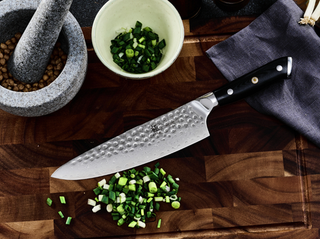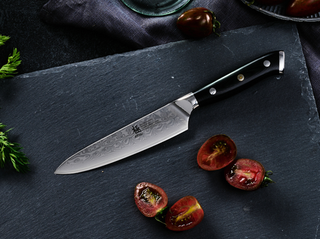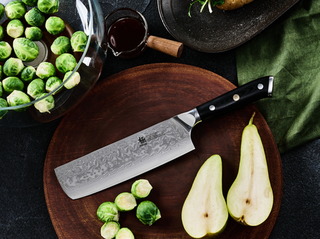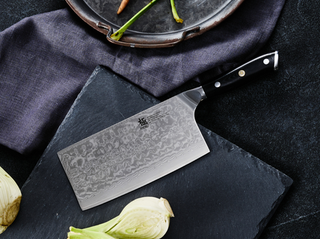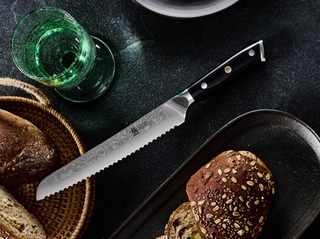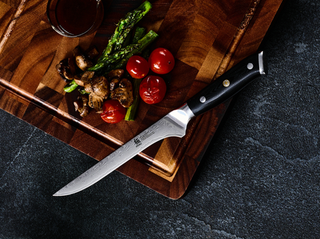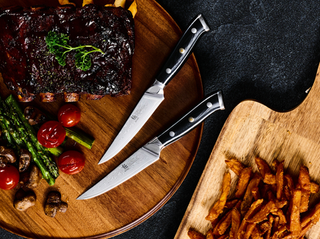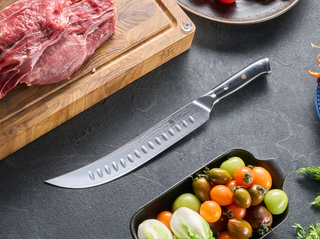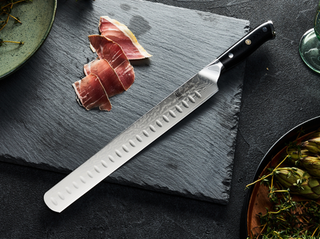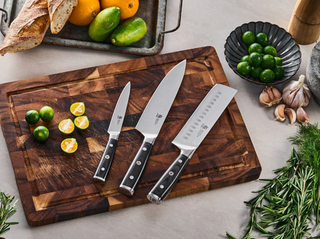Ever wondered why your beautiful wooden cutting board started looking dull and dry? Food grade mineral oil might be exactly what you need. This colorless, odorless oil is your kitchen tools' best friend – and today, we're breaking down everything you need to know about it.

1. What Is Food Grade Mineral Oil?
Food grade mineral oil is a highly refined, purified petroleum-based oil that's certified safe for food contact. Unlike regular mineral oil, it undergoes rigorous purification processes and must meet strict safety standards like NSF certification for food contact materials. This makes it completely safe for use on kitchen tools and surfaces that come into contact with food.
2. Key Applications at a Glance
- Preserving wooden cutting boards and butcher blocks
- Maintaining kitchen knives and tools
- Protecting bamboo utensils
- Seasoning carbon steel and cast iron cookware
- Food processing equipment lubrication
- Preventing rust on kitchen equipment
3. Understanding Mineral Oil Classifications
Many people reach for any mineral oil they find for their kitchen tools – that's a mistake that could compromise your food safety. Understanding the different types of mineral oil can help you make the right choice for your kitchen needs.
Mineral Oil VS Food Grade Mineral Oil
Food grade mineral oil stands apart from other types through its rigorous purification process. Here's what sets it apart:
✓ Safety Certification
- Meets strict NSF standards for food contact
- Zero harmful additives or contaminants
- Regular testing and quality control
✓ Physical Properties
- Completely colorless and odorless
- Stable at room temperature
- Won't react with food or cooking surfaces
Standard industrial mineral oil, on the other hand, contains impurities and additives that make it unsuitable – and potentially dangerous – for kitchen use.
Common Misconceptions About Mineral Oil
❌ "All mineral oils are the same"
- Truth: Food grade mineral oil undergoes specific refinement processes that make it safe for food contact, unlike industrial variants.
❌ "Mineral oil is toxic"
- Truth: Food grade mineral oil is thoroughly purified and FDA-approved for food contact surfaces. It's one of the most inert oils available, meaning it won't go rancid like vegetable oils.
❌ "Baby oil can be used instead"
- Truth: Baby oil is mineral oil with added fragrances and shouldn't be used on kitchen tools or food contact surfaces.
❌ "Vegetable oil is a better alternative"
- Truth: Unlike vegetable oils, food grade mineral oil won't become rancid or sticky, making it ideal for wood preservation and kitchen tool maintenance.

4. Food Grade Mineral Oil Applications
Ever notice how wooden kitchen tools start looking tired and dried out over time? Food grade mineral oil helps solve that problem. Let's look at how you can use it in your kitchen.
Food Grade Mineral Oil For Your Cutting Board
If you've got a wooden cutting board, you'll want to keep it from drying out and splitting. Food grade mineral oil soaks into the wood and creates a barrier that keeps moisture and bacteria out. This is especially helpful for end-grain cutting boards - they're like sponges and need a bit more attention than regular boards to stay in good shape.

Kitchen Tool Maintenance
Got some nice kitchen knives? They need protection too, especially if they're made of high-carbon steel. A quick wipe-down with food grade mineral oil keeps rust away and stops wooden handles from drying out. Take Kyoku Japanese knives, for instance - regular mineral oil care helps them stay sharp and looking great, making them last much longer in your kitchen.
Beyond Basic Applications
Once you have food grade mineral oil in your kitchen, you'll find plenty of uses for it. It's great for seasoning cast iron pans, keeping wooden spoons and spatulas from cracking, and even protecting those nice wooden salad bowls you save for special occasions. Those bamboo tools you love? They'll last longer with occasional mineral oil care too.
The Critical Role of Certification
Once again, not just any mineral oil will do. Food grade certification means the oil has been thoroughly tested and contains nothing that could harm you. Unlike regular mineral oil or even vegetable oils that can go bad over time, food grade mineral oil stays stable and safe for your kitchen tools.
5. Buying Guide
Ready to get some food grade mineral oil for your kitchen? Let's make sure you know what to look for and where to find the good stuff.
Where to Find Quality Food Grade Mineral Oil?
You've got several options for picking up food grade mineral oil. Your local kitchen supply store probably carries it, and you'll find it in most hardware stores too. But here's a tip: not everything labeled "mineral oil" on the shelf is food-grade quality. That's why many home cooks prefer buying from trusted kitchen brands or specialty suppliers.
What to Look For
Shopping for food grade mineral oil is pretty straightforward once you know what matters. First, check for "USP" or "food grade" right on the label - that's your first sign it's kitchen-safe. The liquid should be completely clear, not yellowish or cloudy. And here's something that might surprise you: good food grade mineral oil doesn't have any smell at all.
Recommended Products
While there are plenty of options out there, some stand out from the crowd. Take Kyoku's food grade mineral oil, for example - it's specifically formulated for kitchen tools and cutting boards. What makes it special? It is odorless and colorless, and it also carries both NSF and REACH certifications, which means it meets strict international safety standards for food contact materials.
6. Usage and Application Guide
Got your food grade mineral oil ready? Great! Let's walk through how to use it properly - it's pretty simple once you know the basics.
Getting the Application Right
You don't need any special tools here - just a clean, lint-free cloth or paper towel will do. Pour a small amount of oil on your cloth (not directly on the wood), and apply it in the direction of the wood grain. Think of it like moisturizing your skin - you want even coverage without making things too greasy.
Working with a cutting board? Start with a light coat and let it soak in for a few hours. If the wood still looks thirsty, give it another coat. Most new boards need 3-4 applications before they're properly seasoned.
How Often Should You Apply?
Here's a simple way to tell: if water doesn't bead up on the surface anymore, it's time for another coat. But generally speaking:
- For frequently used cutting boards: Once a month
- For occasional-use wooden tools: Every 3-4 months
- For new cutting boards: 3-4 initial applications, spaced 24 hours apart
Safety First
Even though food grade mineral oil is safe for kitchen use, there are a few things to keep in mind:
- Always apply in a well-ventilated area
- Let the oil absorb completely before using your tools
- Store leftover oil in its original container
- Keep it away from high heat and direct sunlight
Storage Tips
Your mineral oil will last longer if you treat it right. Keep the bottle tightly sealed between uses and store it in a cool, dark place - under your sink works great. And don't worry about it going bad; unlike vegetable oils, food grade mineral oil stays stable for years.

7. Frequently Asked Questions
Is food grade mineral oil safe to use in my kitchen?
Absolutely! It's one of the safest options for maintaining kitchen tools. Unlike cooking oils that can go rancid, food grade mineral oil stays stable and won't spoil. Just make sure you're using properly certified mineral oil - look for those NSF or FDA certifications to be sure.
How is food grade mineral oil different from regular mineral oil?
Food grade mineral oil goes through extra purification steps to remove any potentially harmful substances. Regular mineral oil (like the kind used in machinery) might contain additives that you definitely don't want near your food. That's why it's worth getting the right stuff for your kitchen.
Can I use olive oil or vegetable oil instead?
Vegetable oils and olive oil will eventually go rancid, leaving your cutting boards and tools with an unpleasant smell and potentially harmful bacterial growth. Food grade mineral oil stays fresh and stable much longer.
How much oil should I use on my cutting board?
Less is more here. Start with about a tablespoon for a standard-sized cutting board. You can always add more if needed, but too much oil will just sit on the surface and make a mess. Your board should feel smooth and satiny, not greasy.
How long does food grade mineral oil take to dry?
Give it at least 6-8 hours, but overnight is even better. You'll know it's ready when the surface feels dry to the touch and not oily. If you're treating a new cutting board, remember that first treatment might take longer as the wood soaks up more oil.
Can I use mineral oil on my knife handles?
Yes, especially for wooden handles! It helps prevent drying and cracking. Just apply a thin coat and wipe off any excess. This is particularly helpful for maintaining high-quality knives with wooden handles.
How long does food grade mineral oil last in storage?
When stored properly (in a cool, dark place with the lid tightly sealed), food grade mineral oil has a really long shelf life - we're talking years. Unlike cooking oils, it doesn't go rancid, so you can keep using it as long as it stays clean and clear.
